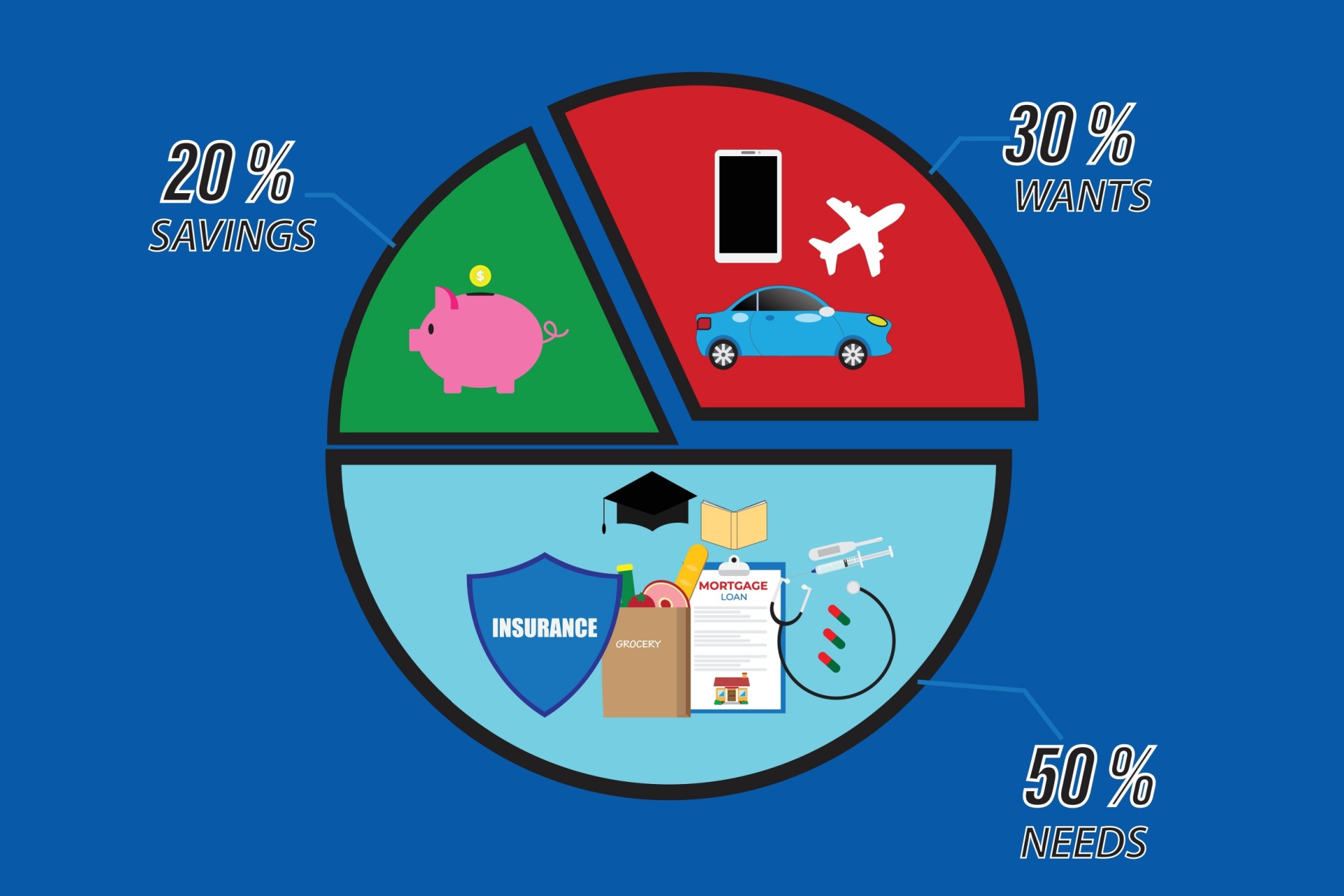Your Guide to the 50/30/20 Budget Rule
Okay, let's be real. Adulting is… a lot. Between classes, work, trying to maintain some semblance of a social life, and maybe even attempting to cook something other than instant noodles, managing your money can feel like an Olympic sport you didn't sign up for. But fear not, fellow young adults! There's a simple and effective way to get a handle on your finances without needing a PhD in economics: the 50/30/20 budget rule.
Think of it as your financial GPS, guiding you towards your goals without feeling overly restrictive. Ready to ditch the money stress and start building a brighter financial future? Let's break it down:
The Magic Numbers: 50%, 30%, and 20%
This rule suggests dividing your after-tax income into three main categories:
- 50% for Needs: These are your essential expenses – the things you absolutely have to pay for to survive and function. Think of them as the non-negotiables.
- Examples: Rent or mortgage payments, groceries, transportation costs (car payments, public transit passes, gas), utilities (electricity, water, internet), minimum loan payments, and basic health insurance.
- 30% for Wants: This is where the fun stuff comes in! These are the things you want but could technically live without. They add enjoyment and quality to your life.
- Examples: Dining out, entertainment (movies, concerts, streaming services), hobbies, shopping for clothes (beyond the absolute basics), travel, and that fancy coffee you treat yourself to.
- 20% for Savings and Debt Repayment: This is the powerhouse category that sets you up for future success. It's all about securing your financial well-being.
- Examples: Savings for emergencies, down payments (house, car), investments, paying off credit card debt above the minimum, and student loan payments above the minimum.
- Examples: Savings for emergencies, down payments (house, car), investments, paying off credit card debt above the minimum, and student loan payments above the minimum.
Why Does This Rule Work ?
- Simplicity: It's easy to understand and implement. No complicated formulas or spreadsheets required (unless you're into that!).
- Flexibility: It acknowledges that you have both essential expenses and things you enjoy. It's not about deprivation; it's about balance.
- Goal-Oriented: The 20% for savings and debt repayment helps you work towards your financial goals, whether it's buying a new phone, traveling the world, or becoming debt-free.
- Provides Structure: It gives you a framework to make conscious spending decisions rather than just letting your money disappear.
Putting the 50/30/20 Rule into Action:
- Calculate Your After-Tax Income: This is the money that actually lands in your bank account after taxes and deductions.
- Track Your Spending: For a month or two, keep track of where your money is currently going. There are tons of budgeting apps or even simple spreadsheets you can use. This will give you a realistic picture of your current spending habits.
- Categorize Your Expenses: Once you have your spending data, start categorizing each expense as a "need," a "want," or a "saving/debt repayment."
- Adjust Accordingly: Compare your current spending percentages to the 50/30/20 guideline. Are you spending too much on wants and not enough on savings? Identify areas where you can make adjustments.
- Create a Budget: Based on the 50/30/20 rule and your tracked expenses, create a budget that allocates your income accordingly.
- Review and Revise: Your financial situation might change, so it's important to review your budget regularly (at least monthly) and make adjustments as needed.
Pro-Tips for Young Adults:
- Start Small: Don't get discouraged if you can't hit the exact percentages right away. Even small adjustments in the right direction can make a big difference over time.
- Automate Savings: Set up automatic transfers from your checking account to your savings or investment accounts1 each payday. This "pays your future self" first.
- Be Honest with Yourself: It's easy to rationalize wants as needs, but be realistic about what's truly essential.
- Find Free Fun: Explore free or low-cost activities in your area. Parks, libraries, and community events can be great sources of entertainment.
- Don't Compare Yourself: Everyone's financial situation is different. Focus on your own progress and goals.
The 50/30/20 budget rule is a powerful tool for young adults navigating the complexities of personal finance. It provides a simple yet effective framework for managing your money, prioritizing your needs and goals, and enjoying life along the way. So, ditch the ramen tears, embrace the 50/30/20 rule, and start building a financially confident future, one budget category at a time! You got this!
.svg)












